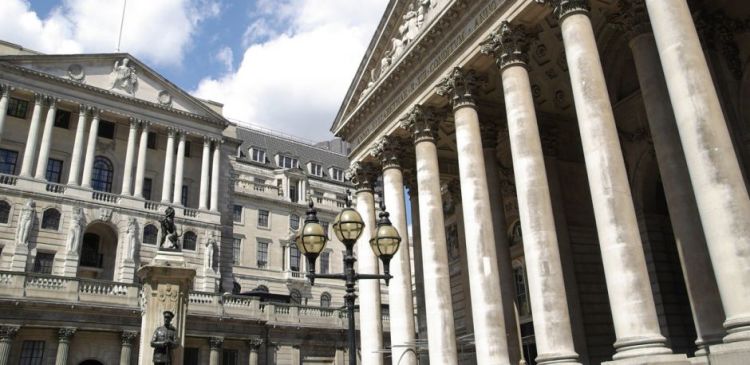The Bank of England interest rate cuts should be “a long way off”, one of the central bank’s most hawkish rate-setters has said, as he cautioned against jumping to conclusions based on falling headline inflation figures.
Jonathan Haskel, an external member of the Monetary Policy Committee, told the Financial Times that though he had dropped his calls for a rate increase at last week’s MPC, he was not preparing to vote for a cut.
“Although the fall in headline inflation is very good news, it is not informative about what we really care about: what we really care about is the persistent and the underlying inflation,” Haskel said. “I think cuts are a long way off.”
Haskel’s comments came after BoE governor Andrew Bailey last week told the FT that interest rate cuts were “in play”. Bailey declared he was increasingly confident inflation was heading towards the bank’s 2 per cent target after it hit double-digit levels in 2022.
Bailey’s comments, which came after the MPC held rates at 5.25 per cent last week, pointed to an increasing possibility of a quarter-point cut in upcoming policy meetings, the next of which is in May.
Markets are fully pricing in an initial rate cut in August and a total of nearly three quarter-point interest rate cuts this year.
The decision over when to cut rates is particularly fraught this year given a general election is expected and Prime Minister Rishi Sunak’s governing Conservatives, who trail heavily in the polls, are keen for a boost to their prospects.
The MPC remains divided over how much comfort officials should be taking from improving inflation statistics. Minutes to last week’s meeting showed there was a “range of views” among members over how far persistent inflationary pressures have receded.
Catherine Mann, another hawkish external member of the MPC, who like Haskel last week ditched earlier calls for higher rates, warned this week in a Bloomberg interview that markets are pricing in too many rate cuts this year.
Haskel told the FT that his vote change had come in part because of signs of improvement in critical indicators of inflation relative to the BoE’s most recent forecasts.
He pointed to February figures showing a fall in headline consumer price inflation to 3.4 per cent, alongside easing in other gauges, including core goods prices. Services inflation fell to 6.1 per cent from 6.5 per cent previously.
There were also some signs of easing in the jobs market, said Haskel, who combines his role on the MPC with academic research at Imperial College, London and who deployed an array of charts during the interview to make his case.
He gestured to a flip chart in his office adorned with sketches of the Beveridge curve, which is used by economists to illustrate the inverse relationship between job openings and unemployment.
Rapid wage growth seen since the coronavirus pandemic had partly been because jobseekers were less suited than in the past to the jobs available, he said.
For the same number of unemployed people there now are a “tonne more vacancies . . . that would be a signal that something has gone wrong with the labour market”, Haskel said, suggesting that jobseekers could be in the wrong part of the country or have the wrong skills for the work on offer.
One positive recent sign was that this problem of mismatch in the jobs market appeared to be easing, he said. The latest data suggested that “although the labour market is impaired relative to say the beginning of the pandemic, it is less badly impaired than we thought it was”.
But Haskel, who thinks post-Covid pressures in the labour market are a crucial factor driving inflation, said wage growth remained too high and was likely to ease only slowly, based on the BoE’s surveys of businesses.
The BoE is also closely watching the services sector. Bailey told the FT last week the central bank should not wait for annual growth in wages and services prices to halve from current levels exceeding 6 per cent before it is willing to cut rates.
Haskel did not want to be pinned down on what level he wanted see for these indicators but suggested he would favour both a later start for rate cuts, and a slower pace of cuts once monetary easing does get under way.
“There is a big question in monetary policy generally — is one an activist or a gradualist,” he said.
“When inflation was at 11 [per cent] I was in the activist camp. We had to move quickly,” he said. “Now we are not in that world anymore . . . I’m very much in the gradualist camp.”
Even if headline inflation fell sharply in the coming months, he said, “I am trying to find out what the underlying, persistent measures are . . . I just don’t think the headline figures give a good guide to the persistence.”
He added: “This is a long, slow process.”
This article was written by Sam Fleming and Delphine Strauss from The Financial Times and was legally licensed through the DiveMarketplace by Industry Dive. Please direct all licensing questions to legal@industrydive.com.







